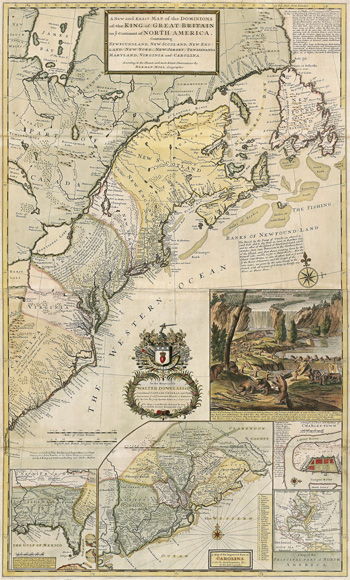
Herman Moll, “A New and Exact Map…,” 1715
|
Literature of U.S. History Before 1865 Early American history has come a long way since “early” merely meant the Puritans. This field has been strongly influenced by scholars in literature, anthropology, performance studies, material culture, ethnography, and many other fields, and has recently become even more diverse by its inclusion of many geographic areas outside of the British mainland colonies that ultimately became the United States. This course is designed to serve as an introduction to the field of early American history. Because a single-semester class is necessarily limited in scope, I have chosen to focus primarily on three main topics (religion, the intersection of slavery and class/gender, and Revolutionary political and print cultures) in order to draw our attention to issues of historiography rather than to a survey. Whether or not you intend in the future to study early America extensively, the field has one particular benefit for all students. The scant original documents available to scholars have required them to glean all they can from limited archives—meaning that they have learned to be far more nuanced in their readings and interpretations as they try to make the best use of all sources, no matter how opaque. They have also made big mistakes at times, as we shall see in the section on “sources and scandals.” To enhance our understanding of how to use sources, we will also occasionally read original documents alongside historians’ analyses of the past. |



